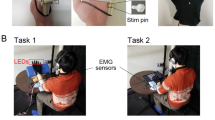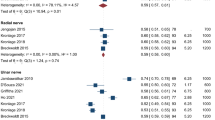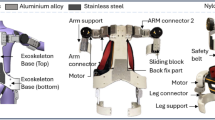Abstract
The question of how the human brain combines disparate sensory inputs to construct a unified body image is of longstanding interest^1,2,3^ . We approached this subject by studying the unusual medical condition of apotemnophilia, in which otherwise mentally normal individuals express the strong and persistent desire for the amputation of a specific healthy limb^4,5,6^ . Here we show using functional brain imaging - magnetoencephalography (MEG) - that the condition is characterised by an absence of activity in the right superior parietal lobule (SPL) when the affected limb is touched. When this discovery is combined with our earlier finding of a simultaneous increase in skin conductance response (SCR) on touching the affected limb^7^ , which reflects increased sympathetic nervous system activity relating to the limb^8^ , we conclude that what has been regarded as a purely psychological condition, actually has a neurological basis and is caused by a failure to represent one or more limbs in the right SPL. This has the bizarre consequence that although sufferers can feel the affected limb being touched, it does not actually integrate into their body image - a mismatch that results in a desire for the affected limb to be amputated.
Similar content being viewed by others
Article PDF
Author information
Authors and Affiliations
Corresponding author
Rights and permissions
About this article
Cite this article
McGeoch, P., Brang, D., Song, T. et al. Apotemnophilia - the Neurological Basis of a 'Psychological' Disorder. Nat Prec (2009). https://doi.org/10.1038/npre.2009.2954.1
Received:
Accepted:
Published:
DOI: https://doi.org/10.1038/npre.2009.2954.1
Keywords
This article is cited by
-
Incarnation and animation: physical versus representational deficits of body integrity
Experimental Brain Research (2010)



